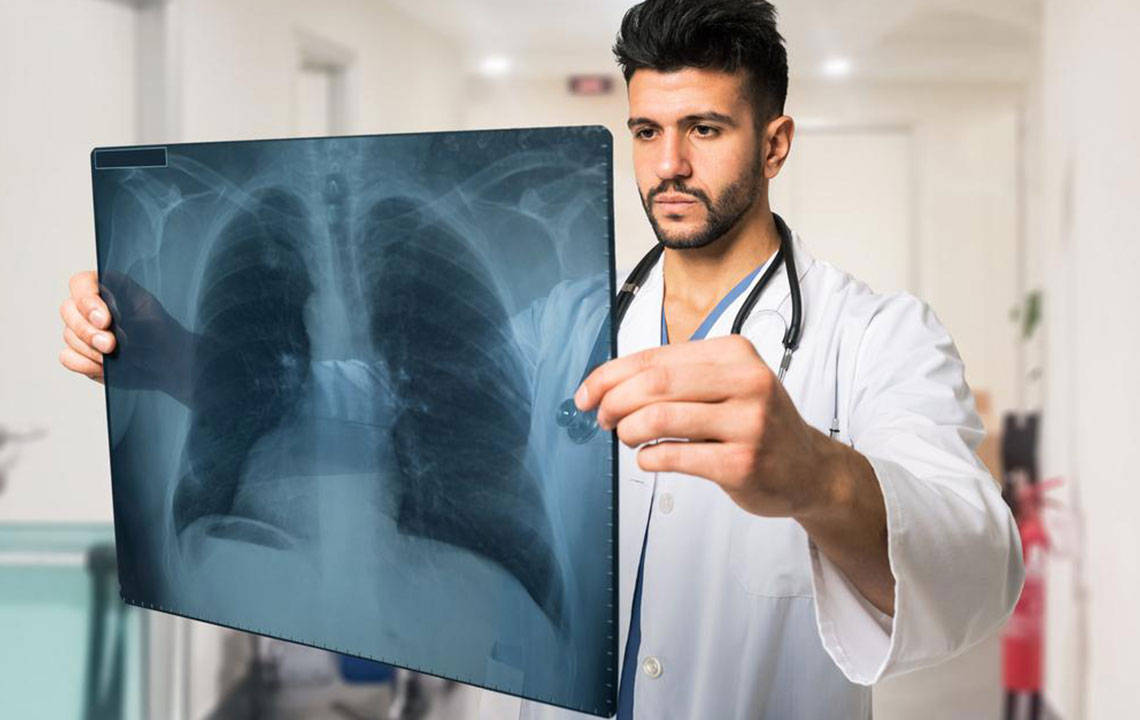Comprehensive Guide to Pulmonary Fibrosis: Symptoms, Causes, and Treatment Options
Pulmonary fibrosis is a serious lung disease characterized by tissue scarring that hampers breathing. This detailed guide explores its causes, symptoms, diagnosis, and management options, emphasizing the importance of early detection and comprehensive care. While no cure exists yet, treatments like medications, oxygen therapy, and rehabilitation can improve quality of life and slow disease progression. Preventive measures and lifestyle adjustments are vital in managing risks. Staying informed and engaged with healthcare providers is essential for those affected, offering hope for better outcomes and ongoing research developments.

Comprehensive Guide to Pulmonary Fibrosis: Symptoms, Causes, and Treatment Options
Pulmonary fibrosis is a chronic and often progressive lung disease that involves the scarring or thickening of lung tissues, which significantly impairs normal respiratory function. This condition disrupts the efficient transfer of oxygen from the air sacs into the bloodstream, resulting in reduced oxygen levels and breathing difficulties. While typically affecting individuals between the ages of 50 and 75, pulmonary fibrosis can affect people of various ages, though it is more common among older adults. Despite the current absence of a definitive cure, advances in medical understanding and treatment strategies have provided ways to manage symptoms, slow disease progression, and improve quality of life for affected individuals.
Understanding the intricacies of pulmonary fibrosis is crucial for early diagnosis and effective management. The causes of the disease are complex and multifaceted, often involving a combination of environmental exposures, genetic predispositions, and lifestyle factors.
Prolonged exposure to environmental pollutants such as dust, chemical fumes, asbestos fibers, and animal dander can cause damage to lung tissues, initiating the scarring process.
Occupational exposures in industries involving coal, grain, metal dust, or asbestos work represent significant risk factors due to repetitive inhalation of harmful particles.
Smoking remains a major contributor, with cigarette smoke further irritating lung tissues and exacerbating existing damage, thus accelerating disease progression.
Genetic factors also play a role; familial cases of pulmonary fibrosis suggest a hereditary component, although specific genes are still being studied.
The hallmark symptoms of pulmonary fibrosis primarily revolve around respiratory difficulties and systemic health impacts. Recognizing these signs early is critical for effective treatment and quality of life improvement.
**Shortness of Breath:**
One of the most prominent symptoms is a gradually worsening inability to breathe comfortably, especially during exertion or physical activity. As lung tissues become increasingly scarred and thickened, oxygen exchange diminishes, leading to breathlessness. Patients may find themselves exhausted after simple daily activities, and in advanced stages, even resting can become challenging.
**Persistent Cough:**
A dry, hacking cough often accompanies pulmonary fibrosis. This cough persists over months, and its severity may fluctuate depending on disease activity and environmental triggers.
**Fatigue and Weakness:**
Since oxygen delivery to muscles is compromised, individuals often experience persistent fatigue and lack of energy. These symptoms can interfere with daily routines and reduce overall productivity.
**Chest Discomfort:**
Some patients report a generalized sense of chest tightness or discomfort, which may worsen with physical activity or at night.
**Weight Loss and Loss of Appetite:**
As lung function declines, patients may experience systemic effects such as decreased appetite and unintended weight loss. Digestive distress may also occur alongside respiratory symptoms.
**Sleep Disturbances:**
Breathing difficulties can interfere with restful sleep, causing disrupted sleep patterns and daytime fatigue. Sleep apnea may also develop as a complication.
**Mental Health Challenges:**
Chronic illness can lead to emotional challenges, including anxiety and depression. The persistent struggle with breathing difficulties and lifestyle changes can cause psychological distress if not addressed timely.
Diagnosing Pulmonary Fibrosis
Early diagnosis hinges on medical history, physical examinations, and a battery of diagnostic tests:
Chest X-rays provide initial clues by revealing abnormal lung patterns.
High-resolution computed tomography (HRCT) scans offer detailed images of lung tissues, identifying fibrosis extent and patterns.
Lung function tests measure airflow, lung capacity, and oxygen transfer efficiency.
Biopsies may be performed when imaging results are inconclusive, helping to confirm diagnosis and rule out other conditions.
Exercise testing evaluates how well lungs perform under physical stress, guiding treatment planning.
Current Treatment Strategies for Pulmonary Fibrosis
Though there is no cure for pulmonary fibrosis yet, various treatments aim to alleviate symptoms, enhance pulmonary function, and slow disease progression.
Medications
Antifibrotic drugs such as pirfenidone and nintedanib have been approved to reduce fibrosis progression. Corticosteroids like prednisone may be used to mitigate inflammation, particularly in cases with underlying inflammatory components. However, their effectiveness varies, and potential side effects must be carefully managed.
Oxygen Therapy
Supplemental oxygen is a cornerstone of symptom management, especially during exertion and sleep. Regular oxygen therapy helps maintain adequate oxygen levels, reducing fatigue and improving cognitive and physical functioning.
Pulmonary Rehabilitation
Multidisciplinary pulmonary rehabilitation programs provide tailored exercise regimens, breathing techniques, nutritional advice, and psychological support. These programs are vital for improving quality of life, reducing symptoms, and increasing physical endurance.
Advanced Treatments and Surgical Options
In cases where disease progression severely impairs breathing, options like lung transplantation are considered. This complex surgical procedure offers increased survival chances and improved quality of life but requires careful evaluation of eligibility criteria and post-surgical management.
Managing Comorbidities and Lifestyle
A healthy lifestyle, including smoking cessation, vaccination against respiratory infections, and avoiding environmental pollutants, plays a critical role in disease management. Regular medical check-ups and adherence to treatment plans are essential for optimal outcomes.
Prevention and Outlook
Preventing pulmonary fibrosis involves minimizing exposure to known risk factors, such as occupational hazards and pollutants, and adopting healthy lifestyle habits. Early detection and prompt intervention can significantly alter the disease trajectory.
Living with pulmonary fibrosis requires resilience, ongoing medical support, and mental health care. Patients are encouraged to stay active within their limits, maintain social connections, and seek psychological support when needed. Advances in research continue to bring hope for emerging therapies and potential cures in the future.
Overall, understanding pulmonary fibrosis comprehensively enables better management strategies, improves patient outcomes, and fosters awareness for early detection and intervention.





